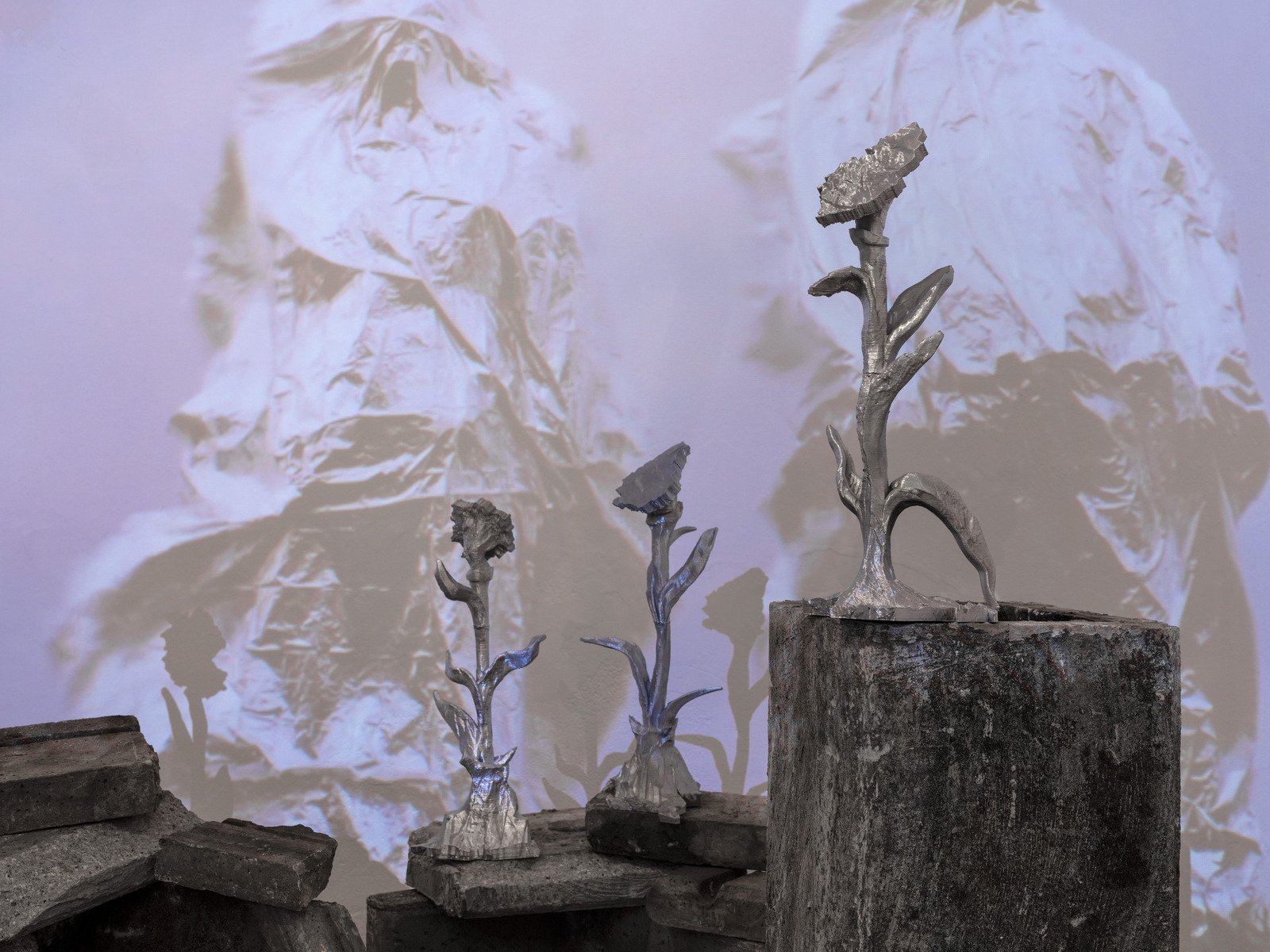Curatorial text: Zofia nierodzińska with support of Marija Petrovic
The exhibition ‘Long-distance Relationships’ explores the theme of migration in its most personal and intimate dimension.
Economic migration is a universal phenomenon that always takes place from structurally weaker countries and regions to more industrialised and prosperous ones. Its direction is specific: from east to west, from south to north. Mostly represented in numbers, it is often depicted as a threat, accepted only in its utilitarian dimension and very rarely as part of an identity, a family history, or a self-perception in the world.
Across Germany and in Berlin, the largest minorities are from Turkey and Poland, and in Poland from Ukraine and Belarus. Regions such as Podlasie in Poland or Anatolia in Turkey are areas shaped by a socially structured history of migration. In Germany, there has been talk for years of a post-migrant society, as almost 30 percent of its population consists of people with a migration history – not only from outside of the country’s borders but also across the now invisible border inside it. Shortly after the fall of the Berlin Wall, many people from the former East Germany moved to West Germany, driven by the desire to improve their livelihoods as a result of factory closures and the precarisation of the region. Today, most people born in Germany do not consider migration to a more economically prosperous country as a possible life scenario, as there are few countries more privileged than their own. When people of German origin do migrate, they are called expats, not migrants.
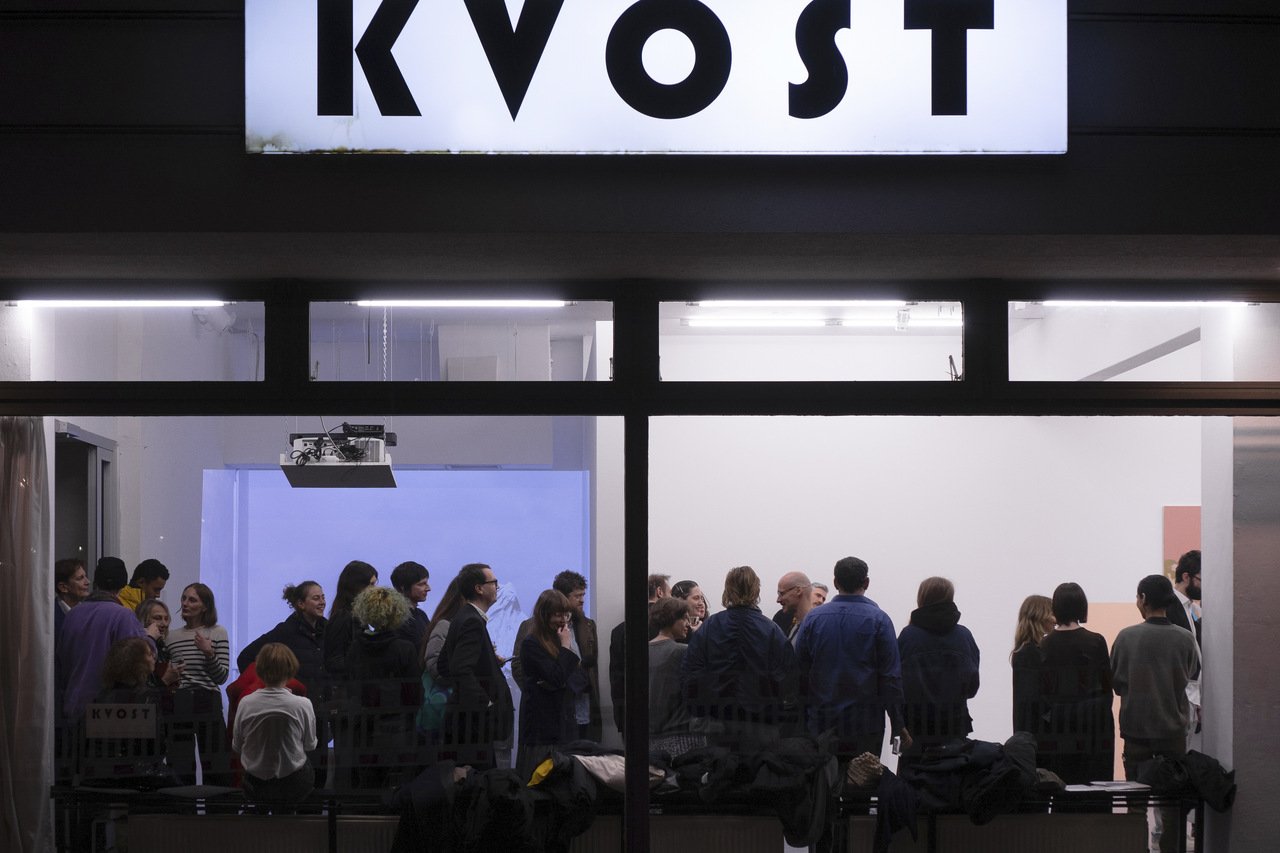
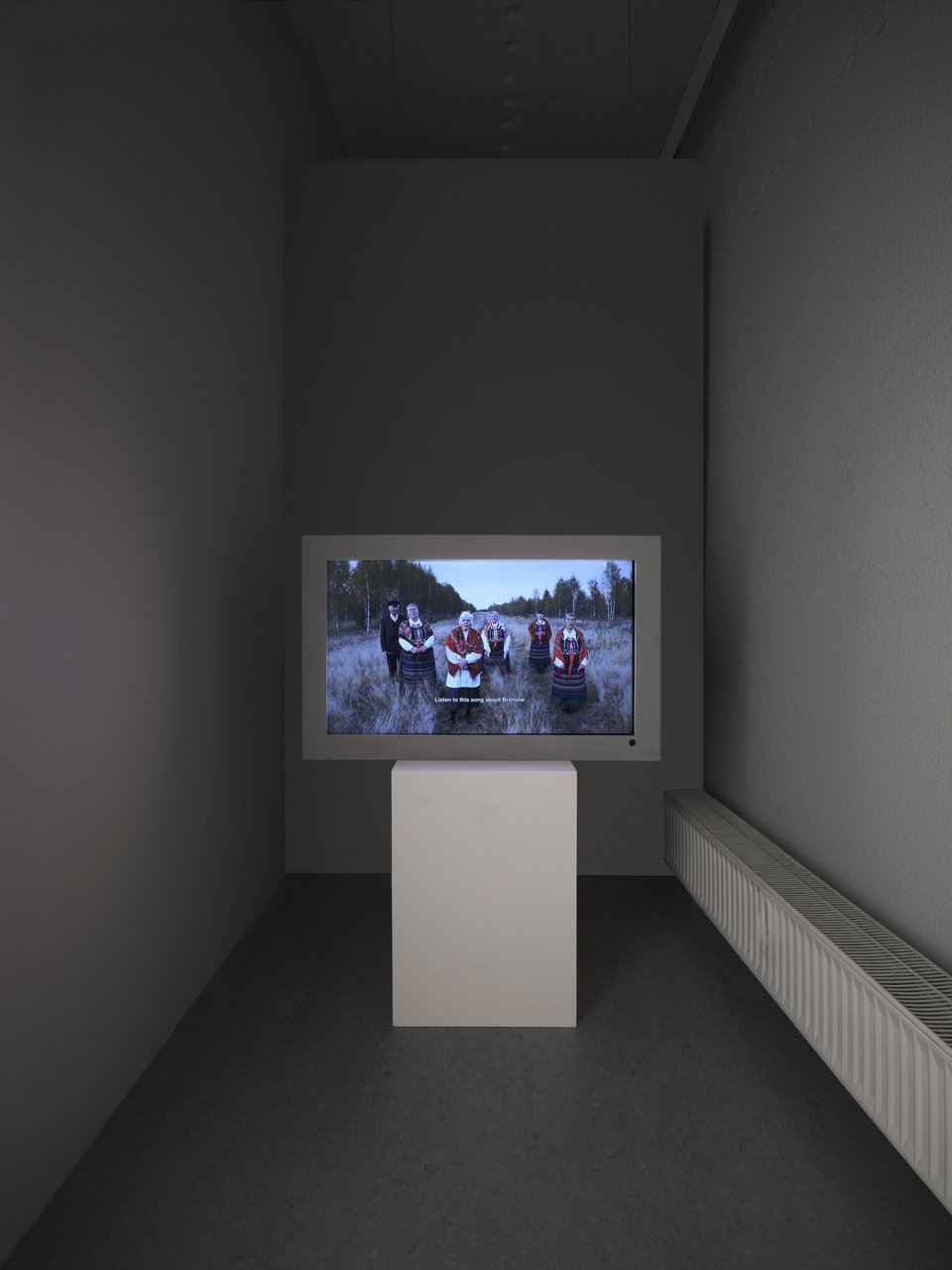
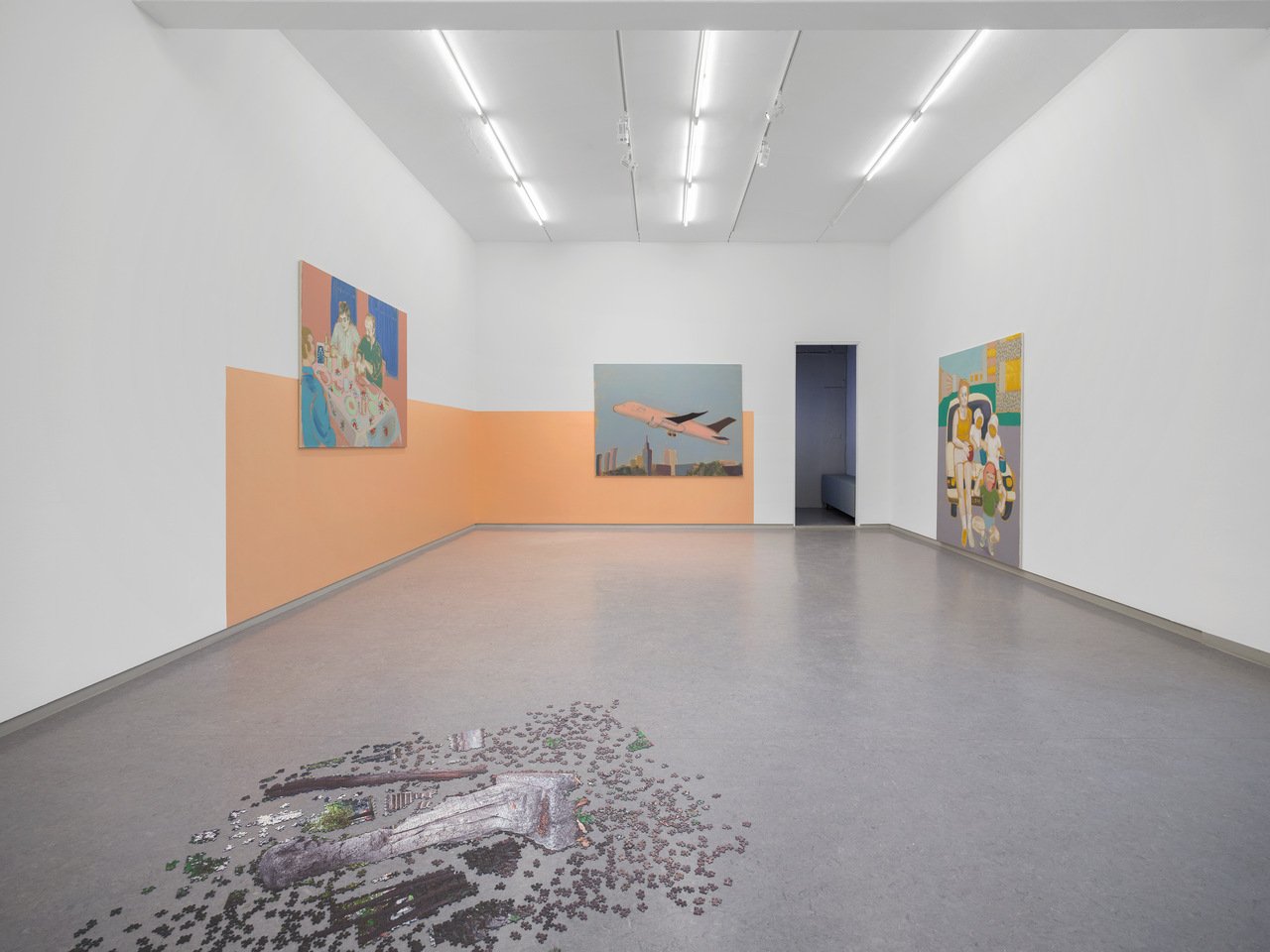
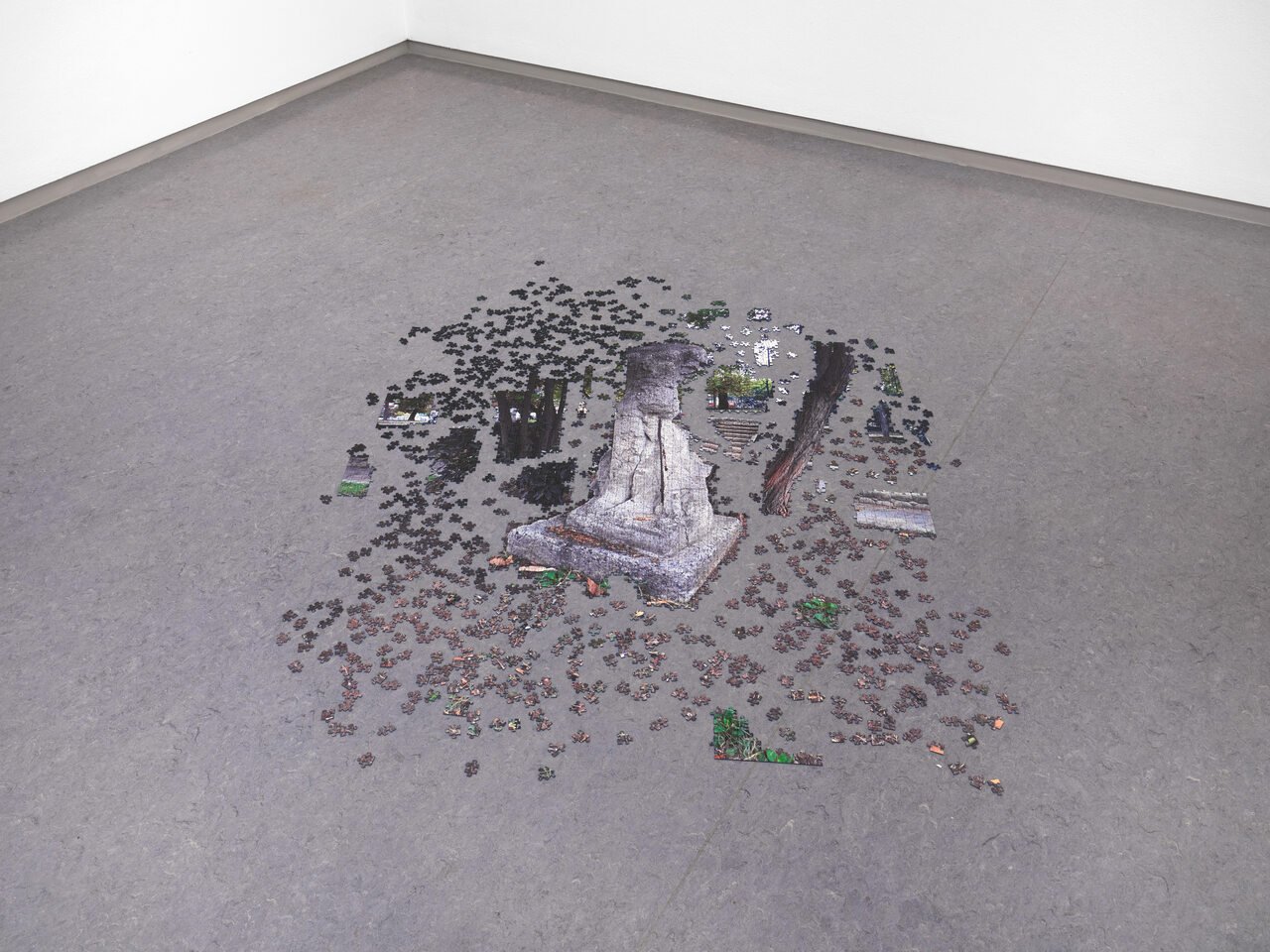
The aim of the exhibitions – at KVOST in Berlin and the Lectwo Gallery in Poznań – is to examine the impact of migration and outline the long-term nature of the migratory condition and its determinants on successive generations of people. The project centers and seeks to preserve migrant stories that previous generations have kept silent, often out of shame and a sense of personal failure. The invited artists map out what constitutes the migratory identity in a way that oscillates between personal, often autobiographic experiences, and social as well as political frameworks. Thereby bringing to attention how the utmost private conditions of migrant lives in the country they arrived to are intensely shaped by structures way beyond the individual’s control. However, the exhibitions not only seek to illuminate the experiences of the ones who moved away but also those who were left behind. As the relationships between them constitute the other substantial facet of the migrant condition, one that is rarely acknowledged.
In his installation ‘Reunification’, Aykan Safoğlu, an artist of Turkish origin, depicts the Workers’ Monument (Muzaffer Ertoran, 1973), placed opposite the German Immigration Liaison Office in Istanbul. The artist witnessed the daily destruction of the statue in the 1990s when it was subjected to numerous attacks. At the same time, when news of recurring right-wing attacks against Turkish ‘guest workers’ in Germany grew louder. The sculpture was removed from the park in 2016 and has remained missing ever since, but Safoğlu revives it with his puzzle installation, alluding to a precarious and fragile existence that transcends the boundaries of a migrant experience. In his second work in the exhibition, ‘Aunt Yellow’ (2021), the artist recalls his aunt Zerrin, who emigrated to West Germany and whom Safoğlu often visited as a teenager. In his essay, Safoğlu portrays an unusual seamstress who, as a ‘guest worker’, was denied the right to vote but exercised her right to change the appearance of the people she sewed for.
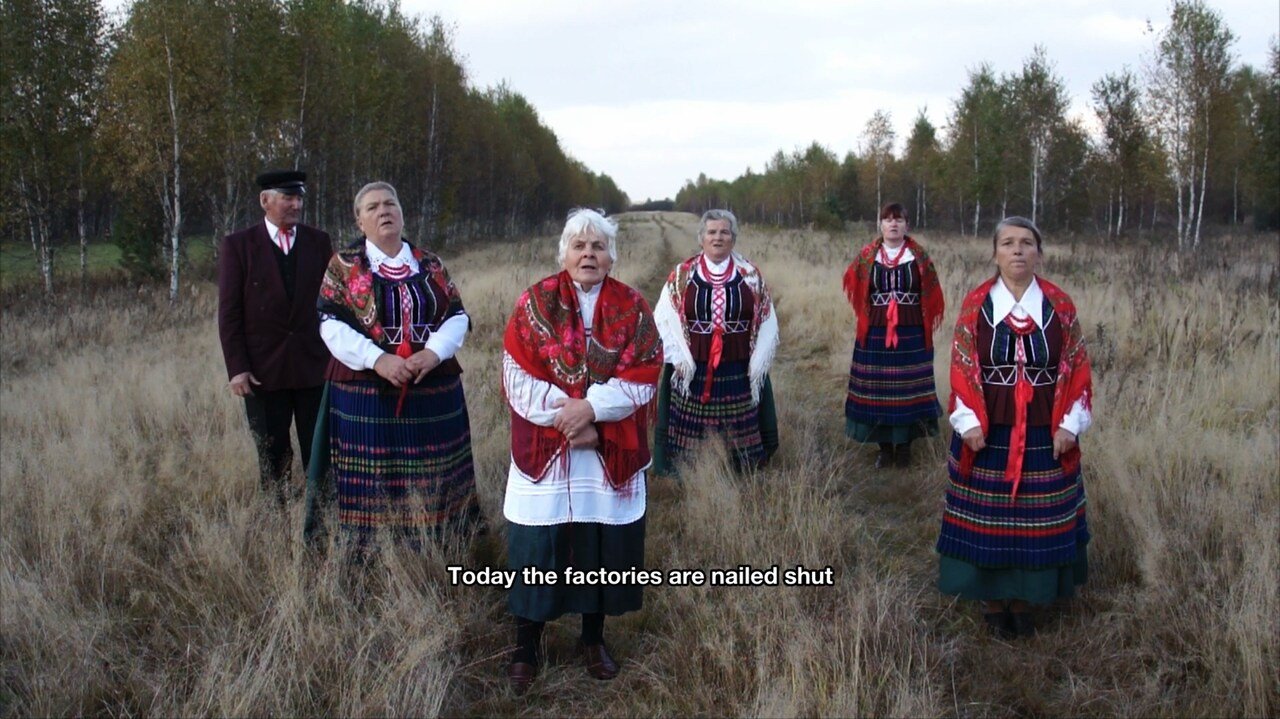
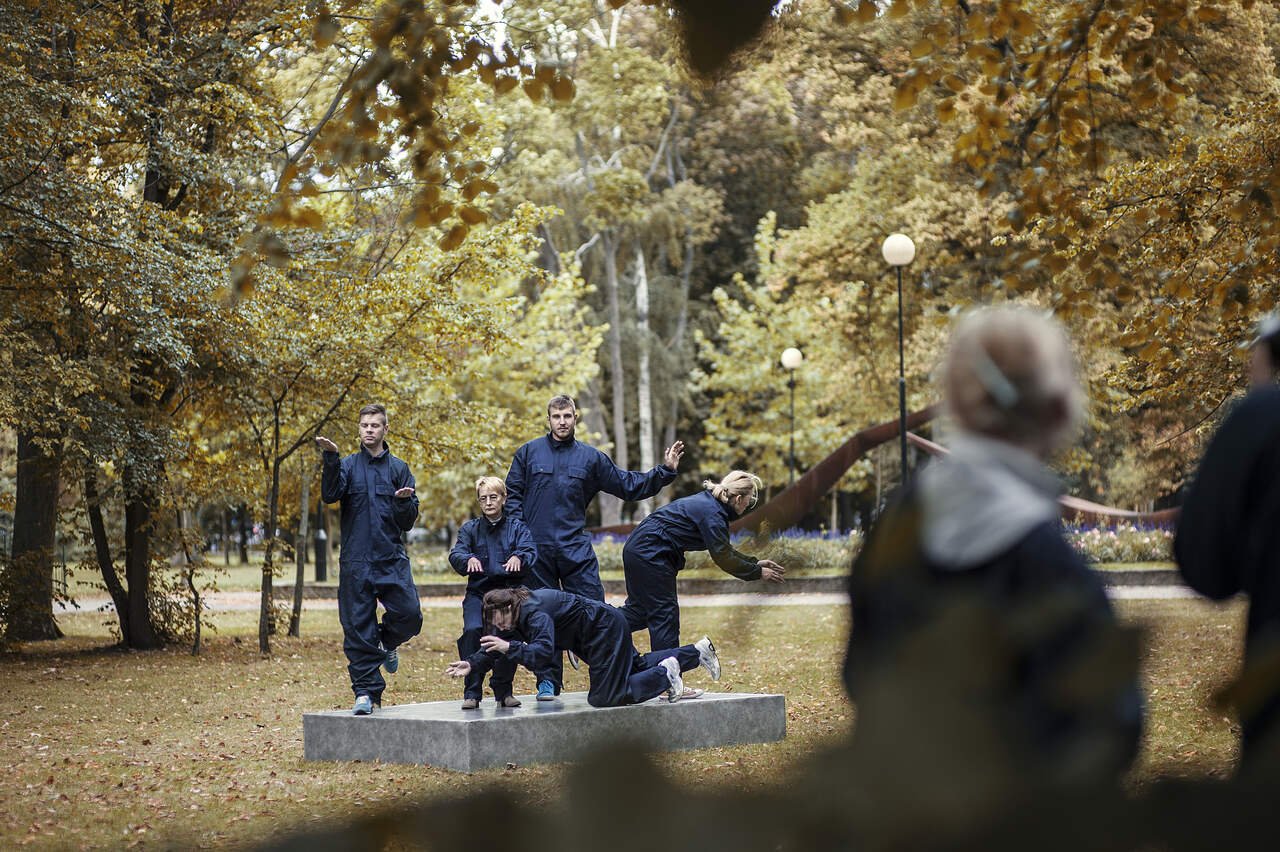
The video by Polish-British artist Alicja Rogalska, ‘Broniów Song’ (2011), shows the perspective of people who remain in the place of their birth, aware that the world’s capitals are not waiting for them with open arms. They are reminders of those who have not been carried along by the wind of change, whose workplaces have closed, and whose family farms cannot withstand competition from large corporations. They are people filled with nostalgia for a world that has passed, and longing for young people leaving their villages in search of a better life. While simultaneously, they are symbols of the past for those who went away and now missing what they had to leave behind. The video presents their desires address as a song, juxtaposing traditional expression with problems of a postmodern society, thereby drawing attention to the limits of nostalgia. Rogalska’s second work ‘Monument to Precarious Workers’ (2015) shows a public performance involving five workers standing absolutely still in the same work-related poses for several hours. Shot in a spa town popular with tourists, the work refers to precarious work conditions in the hospitality, entertainment and retail business.

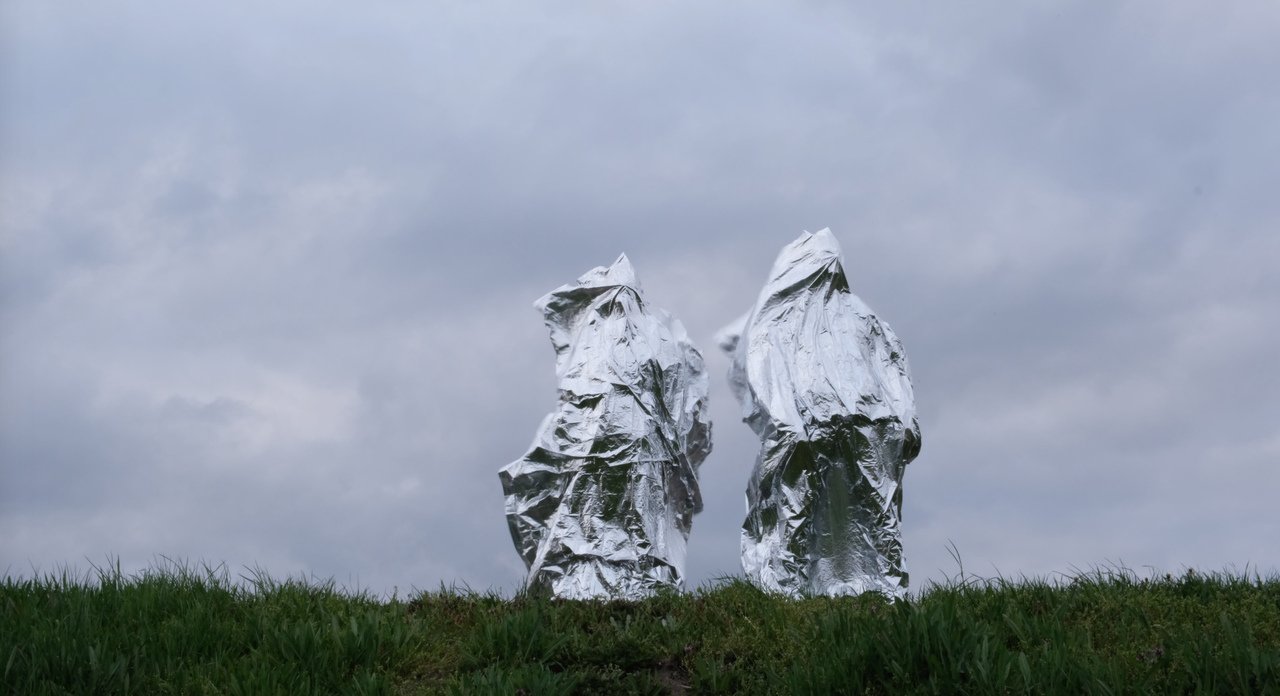
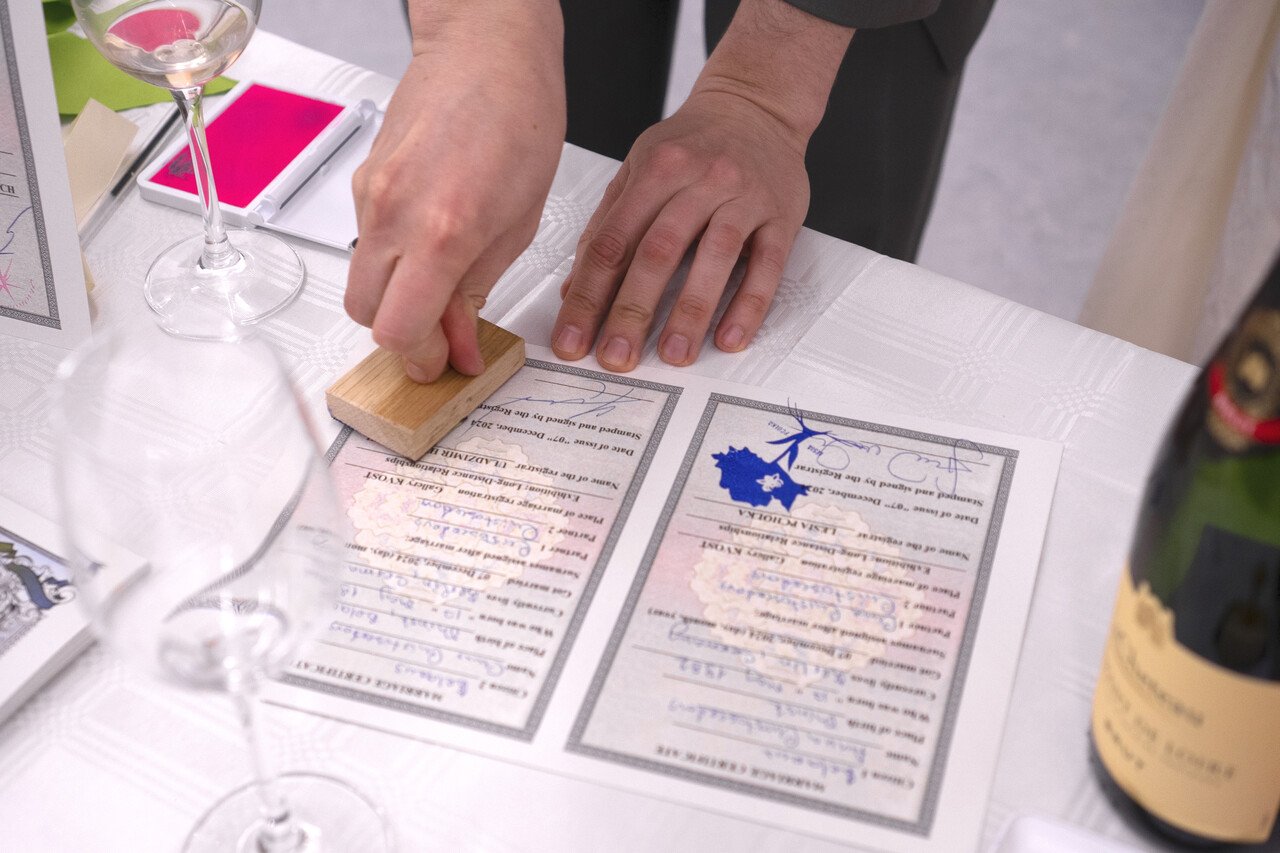
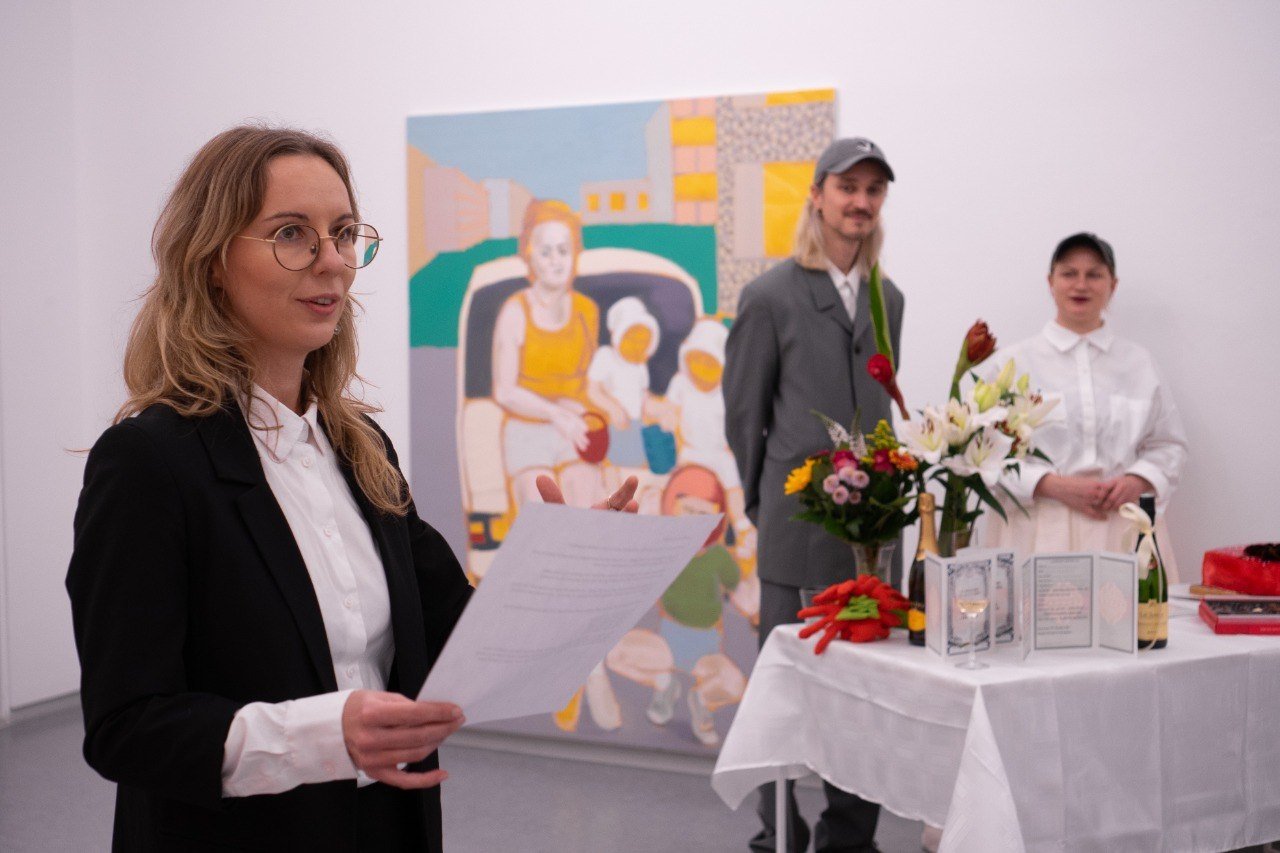
Lesia Pcholka and Uladzimir Hramovich’s installation ‘By Law’ (2022-24) symbolically depicts the difficulties of legally sanctioning their relationship. As political refugees from Belarus, they were forced to leave their homeland after taking part in protests calling for democratic elections. In every country they have lived in since 2020, they have tried to legalise their relationship but failed for various reasons. The bridal bouquets in the installation with flower in the form of the individual country’s set borders, represent places where the couple had found temporary homes, which stability has often been shaken. Political, economic, and private insecurity combine in the duo’s work and the couple’s personal lives to create fragile family structures. In their work, the legalisation of the relationship, the dream of marriage, becomes an unattainable symbol of stability; a middle-class serenity that is definitely lacking in life in exile.


In her paintings, Zofia nierodzińska refers to the story of her father, who emigrated from Podlasie, a region in north-eastern Poland, to the USA as an illegalized blue-collar worker in the late 1980s. Analyzing migration through family memories and social structures, her works depict the phenomenon as a trans-local network of dependencies that shapes both the community from which the person emigrates as well as the reality of the country to which they arrive. The lightness of the paintings and their vibrant detail draws attention to what is presented, while at the same time amplifying how some elements are omitted or obscured. This is intrinsic to the workings of memory, often stylized and selective. Thereby, the works move beyond purely autobiographical representations, highlighting the artist’s aim to understand her own situation as a migrant living in Berlin, with very different opportunities and symbolic capital than her father had forty years ago.
The works presented urge us not to negate the obvious differences in the diverse scope of experiences from different countries, but still, to expand our view beyond them to explore what these experiences have in common. To ask how it can be possible to build on them and establish solidarity among migrating people across national, ethnic, and cultural divides, or how to shape a common migratory heritage.


The project is supported by the Foundation for German-Polish Cooperation. In cooperation with Deutsch-Polnisches Haus, Prater Galerie and the Belarusian Community RAZAM e.V.
Artists: Aykan Safoğlu, Alicja Rogalska, Lesia Pcholka&Uladzimir Hramovich, Tubi Malcharzik, Zofia nierodzińska
Exhibition Title: Long-distance Relationships
Curated by: Zofia nierodzińska, Stephan Koal
Venue: KVOST
Place (Country/Location): Berlin, Germany
Dates: 20.11.2024 – 18.01.2025
Photos by: All images by Valentin Wedde courtesy of KVOST, Berlin.

